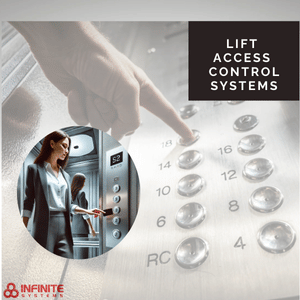
Lift Access Control Systems : A Solution To Multi-Storied Building Facilities
Elevators, often known as lifts, are a type of vertical transportation used primarily to convey people between floors in high-rises and skyscrapers. People and products are transported from one floor to the next using these. Elevators, in fact, have become a crucial feature of high-rises and other large buildings.
Lift access control systems allow certain people to access particular floors in a building at specific times. Depending on the control panel selected, systems can control a variety of elevators. This can increase a company’s security while also lowering expenditures.
To grant access to certain floors within the building, each employee who works in the facility can be given an identity device. Elevator access can be linked to CCTV cameras to monitor who is trying to utilize elevators to get to different floors.
Certain people can be granted access to specific floors on specific days and hours using access control software. Executives have the ability to visit any floor at any time. A zone’s status can be modified or access denied. Elevator access control that is both secure and adaptable can be installed.
Elevator access control systems are made up of three parts:
Control buttons:
Even in smart elevators, a few key button functions will remain in the cab. The door open, door shut, emergency call, and emergency stop buttons are all located on the elevator controller.
Access reader/authenticator:
An RFID reader, a keypad, or a biometric scanner can all be used as an access reader/authenticator. The elevator’s access control interface evaluates if a renter has the necessary credentials to utilize the elevator and access specific floors.
Access control panel:
The brain of the system is the control panel. It keeps track of renter information as well as access rights. This can be a local device or cloud-based software that you can access via the internet.
Check out the advantages of Lift access control systems
- Your employees can also utilize an authorized credential such as a pin code reader, access control, proximity reader, identification, timing, attendance monitoring, and other applications to gain access to secure areas.
- Employee theft and fraud are often aided by working in solitude without supervision. You can keep track of who enters certain locations and when using electronic access control.
- You can quickly adjust access permissions while an investigation is underway if you have a theft or data breach concern. You can also set up alerts to receive notifications when someone tries to enter a restricted area after their permission has been revoked.
- Physical theft is, without a doubt, a serious problem. There is a significant risk of a data breach. As a result, you should put in place a strong electronic access control system for your data rooms and servers.
- A high-performance elevator floor access control system can help to eliminate the requirement for manned floor guarding. If your building has an elevator access control system, it means that only those who are permitted can reach a given floor.
- The majority of these elevator floor access control systems have extensive networking features built in. As a result, they’re simple to set up, handle, and maintain.
- The elevator floor access control panel can also be used to set the time. It will make it easier for you to set access times.
Conclusion
If you want to install an elevator or lift access control system as well as door access control at your office or facility, contact Infinite Systems Technology Corporation. ELV and Automation Contractor since 2001. Trusted by Top 1,000 Corporations in the Philippines.
Contact us at (+632) 8892-9073 to learn more about our access control systems or to discuss your requirements.
Lift Access Control Systems : A Solution To Multi-Storied Building Facilities brought to you by: Infinite Systems Technology Corporation
Access Control Website: https://www.accesscontrol.ph